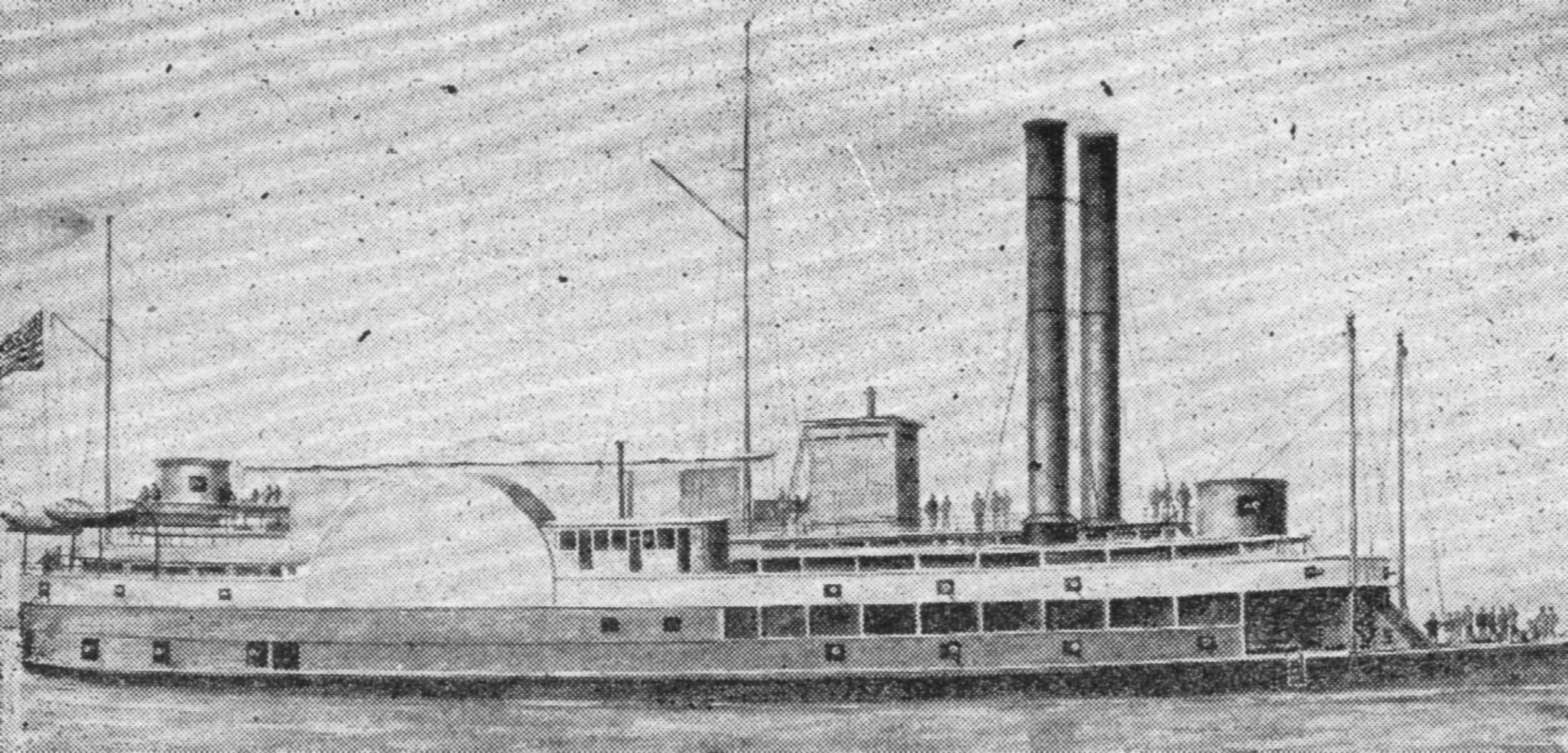Built at New Albany, Ind., in 1861, the wooden-hulled packet Louisville measured 220 feet in length by 38 feet in width.
Five boilers suppled steam to engines (recycled from the Kate Frisbee) having 28-inch cylinders with a 7.5-foot stroke. The vessel’s maximum speed was listed at 8 mph.
The big sidewheeler came out new on February 9, running in the Louisville-New Orleans trade, with Capt. Hollcroft in command.
In a report from the deck of his flagship Black Hawk, moored at Vicksburg on July 18, 1863, Acting Rear Adm. David D. Porter stated that the Manitou and Rattler ascended Little River, a tributary of the Black River in Louisiana, and succeeded in capturing the Confederate steamer Louisville, reportedly “one of the largest and perhaps the best steamer now on Western waters.”
An excerpt from the log of the Manitou states: “July 13, 1863: At 3:45 a.m., cast off and ran into Little River. At 7:45 ran into and up French Fork in pursuit of a steamer said to be trying to escape. Gunboat Rattler in company astern.
“At 8:20 a.m., about three miles up French Fork, came in sight of a large steamer just going around a bend. Opened fire with howitzer and bow guns. Fired three shots. Ran alongside the steamer’s stern and took possession. The steamer proved to be the Louisville.
“Attempted to tow it down stern-first, but owing to the river being so narrow and crooked, we gave orders for the boat to follow closely. At 9:45 a.m., arrived at junction of French Fork and Little River. Rounded to and sent prize ahead. 11:50 arrived at Trinity.”
On July 15, the Perrel convoyed the Louisville on down the Black River. On September 18, Porter asked Secretary of the Navy Gideon Welles, in Washington, for permission to change the name of the Louisville to Ouachita. By September 29, 1863, the Navy purchased the Louisville, then lying at Cairo, for $68,000. Four days prior, on September 25, the name had been changed to Ouachita. On October 20, 1863, the steamer was reported as being at Cairo for conversion into a gunboat. Formal commissioning was held on January 18, 1864. According to records, up to April 1865, only $91.50 was listed as having been spent on repairs. By October 19, the vessel was reported as “appraised for government use” and said to be a prize to the Navy.
Converted To ‘Summer Boat’
At the conclusion of the Civil War, the riverboat was sold by auctioneer Solomon Silver to Daniel T. Head of New Orleans and, with Capt. John W. Tobin as master, was refitted as a packet and renamed Vicksburg, operating as the “summer boat” from New Orleans to the Ouachita River.
During the cotton season, the riverboat ran in the New Orleans-Vicksburg trade, under the command of Capt. J.M. White. In February of 1868, the steamboat was sold to George Work, of New Orleans, with Capt. F.A. Blanks presiding as master. The Vicksburg was destroyed by fire, along with the steamer Underwriter, at Cairo in July of 1869.
Editor’s note: For questions or suggestions regarding the Old Boat Column, Keith Norrington may be contacted by e-mail at curatorkeith@yahoo.com, or by mail through the Howard Steamboat Museum at P.O. Box 606, Jeffersonville, Ind. 47131-0606.



